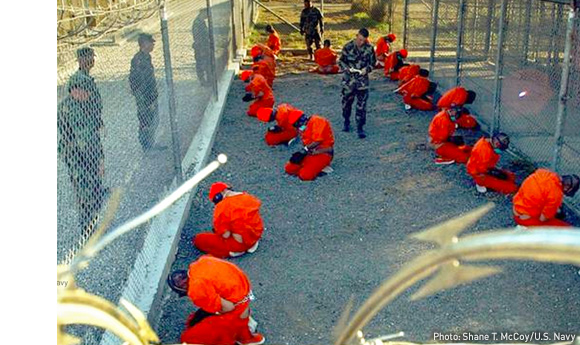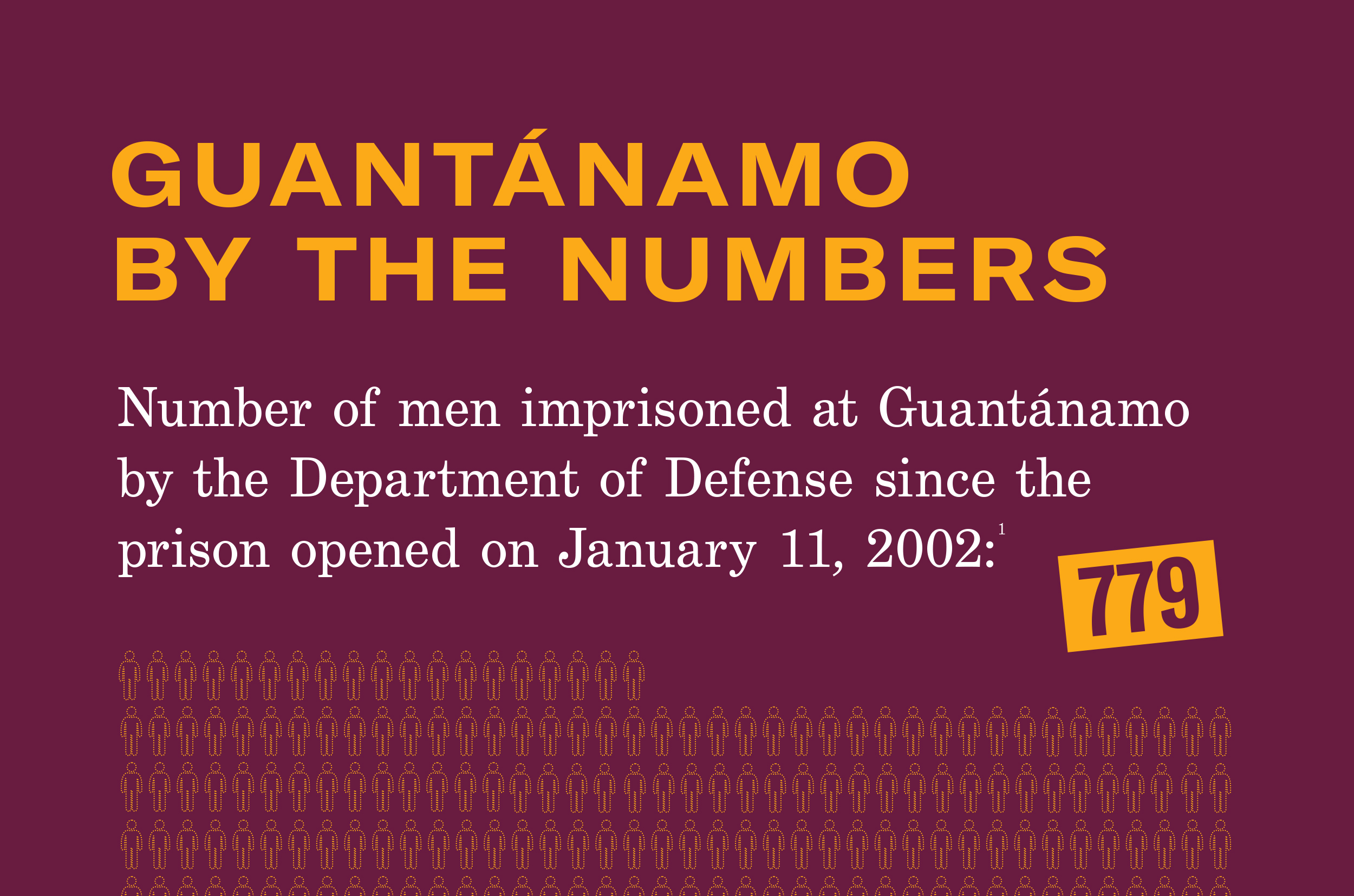Close Guantánamo


Sixteen years have passed since the first prisoner arrived in Guantánamo Bay. Almost 800 men have passed through the cells of Guantánamo, originally fashioned as an “island outside the law” where terrorism suspects could be detained without process and interrogated without restraint. It is long past time for this shameful episode in American history to be brought to a close.
Every branch of our government shares responsibility for Guantánamo’s ongoing damage to the human rights of detainees, our nation’s reputation, and national security. The president and his agencies have the power to end indefinite detention and close Guantánamo, ending this travesty rather than perpetuating it. However, the Trump administration has pledged to keep Guantánamo open, ignoring that it has been a catastrophic failure on every front.

Guantánamo by the Numbers
Source: American Civil Liberties Union
The Obama administration sought to “close” Guantánamo but failed. That administration considered transferring some detainees — most of whom who had been imprisoned for more than a decade without charge or trial — to a prison in the United States. This was never the way to close Guantánamo. Importing indefinite detention and unfair military commissions would just create “Guantánamo North” on American soil, entrenching the prison’s blight on our nation’s core values and the rule of law. And it would perpetuate, and possibly worsen, the agony of men denied an end to their plight.

Wasted Opportunities: The Cost of Detention Operations at Guantánamo Bay
Source: American Civil Liberties Union
Closing Guantánamo requires ending indefinite detention without charge or trial; transferring detainees who have been cleared for transfer; and trying detainees for whom there is evidence of wrongdoing in our federal criminal courts here in the U.S. Our federal courts routinely handle high-profile terrorism cases. If a prosecutor cannot put together a case against a detainee, there is no reason that person should continue to be imprisoned, whether in Guantánamo or the United States.

The Campaign To Free The Best-Selling Author of Guantánamo
Source: American Civil Liberties Union
To close Guantánamo:
- The president must order his administration to end indefinite detention and close the Guantánamo prison.
- The president should require the Secretary of Defense to continue to use existing certification and waiver procedures to promptly repatriate and resettle abroad all prisoners who have been cleared for release. He should also require the Department of State to secure transfer abroad.
- The president must order the Secretary of Defense to ensure the Periodic Review Board ("PRB") process, which determines whether the continued imprisonment of un-cleared detainees is justified, is meaningfully followed.
- The president should suspend the failing , and the executive branch should transfer to federal court any detainee it seeks to prosecute, if there is untainted evidence against him.
- The Departments of Defense and Justice should not contest habeas corpus challenges brought by detainees who are not prosecuted. Federal court judges should then promptly order these detainees’ release so they can be repatriated and resettled abroad.
- The Department of Justice should enter into plea negotiations with detainees willing to plead guilty in federal court.
The other branches of government must also do their part to close Guantánamo:
- Congress must lift the unnecessary restrictions on transfer and release from Guantánamo, including for the majority of men at Guantánamo, whom the national security agencies and military have unanimously determined should be released.
- The Supreme Court must define the scope of war-time detention, and ensure that the right to habeas corpus is a meaningful one that tests, and does not endorse, the government’s case.
Justice Denied Video: Voices from Guantánamo


